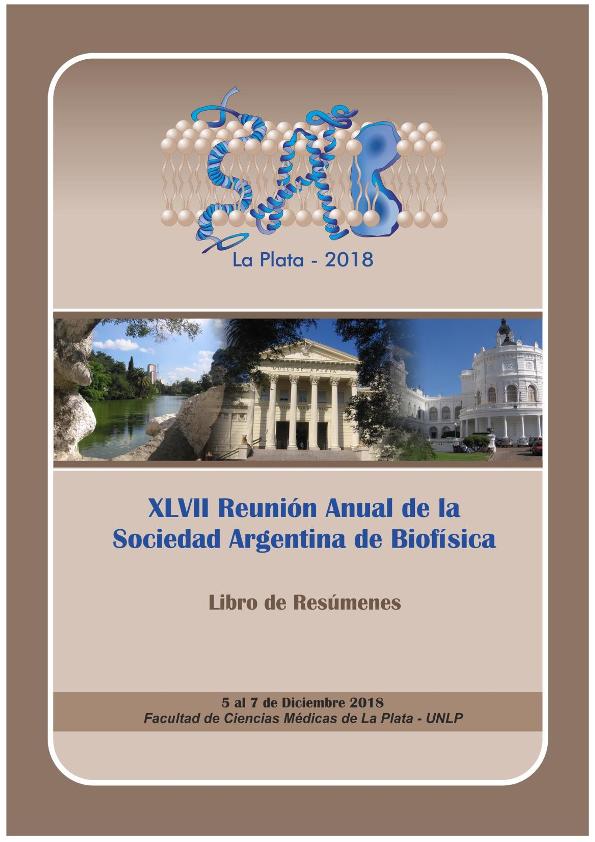Evento
In vivo systems to study class II bacteriocins toxicity and immunity
Ríos Colombo, Natalia Soledad ; Chalon, Miriam Carolina
; Chalon, Miriam Carolina ; Galván, Adriana Emilce
; Galván, Adriana Emilce ; Navarro, Silvia Adriana
; Navarro, Silvia Adriana ; Lanza, Lucía
; Lanza, Lucía ; Barraza, Daniela Estefanía
; Barraza, Daniela Estefanía ; Acuña, Leonardo; Fernandez de Ullivarri, Miguel
; Acuña, Leonardo; Fernandez de Ullivarri, Miguel ; Minahk, Carlos Javier
; Minahk, Carlos Javier ; Bellomio, Augusto
; Bellomio, Augusto
 ; Chalon, Miriam Carolina
; Chalon, Miriam Carolina ; Galván, Adriana Emilce
; Galván, Adriana Emilce ; Navarro, Silvia Adriana
; Navarro, Silvia Adriana ; Lanza, Lucía
; Lanza, Lucía ; Barraza, Daniela Estefanía
; Barraza, Daniela Estefanía ; Acuña, Leonardo; Fernandez de Ullivarri, Miguel
; Acuña, Leonardo; Fernandez de Ullivarri, Miguel ; Minahk, Carlos Javier
; Minahk, Carlos Javier ; Bellomio, Augusto
; Bellomio, Augusto
Tipo del evento:
Reunión
Nombre del evento:
XLVII Reunión Anual de la Sociedad Argentina de Biofísica
Fecha del evento:
05/12/2018
Institución Organizadora:
Sociedad Argentina de Biofísica;
Título del Libro:
Libro de Resúmenes: XLVII Reunión Anual de la Sociedad Argentina de Biofísica
Editorial:
Sociedad Argentina de Biofísica
Idioma:
Inglés
Clasificación temática:
Resumen
Class II bacteriocins are membrane-active peptides that act over a narrowspectrum of bacterial targets and have a great potential application as antibioticsin medical sciences. They act on the cytoplasmic membrane dissipating thetransmembrane potential by forming pores. There is solid evidence thatmembrane receptor proteins are necessary for their function, however the preciserole of this receptor and the nature of the pore remain elusive. The most acceptedmodel suggest that bacteriocins bind the receptor to change its conformation,creating a channel that remains open. Nonetheless, several studies support asecond model in which the bacteriocin is able to disrupt the membrane itself andthe receptor might act just as an anchor allowing the subsequent bacteriocininsertion to form the pore. In order to reveal whether or not the pore structureinvolves the specific receptor, we designed chimeric peptides fusing themembrane protein EtpM with different class II bacteriocins. We chose E. coli as areceptor-free expression host. The fusion EtpM-bacteriocin anchors eachbacteriocin to the membrane and kills the expressing host cell, even in theabsence of the specific receptor. These results are in line with the second model inwhich the pore is formed through a receptor-independent interaction with the lipidbilayer. The effect of these interactions was also analyzed, through a fluorophorethat changes its fluorescence intensity according to transmembrane potential.On the other hand, an immunity protein protects the producer strain against itsown bacteriocin. For antimicrobials under investigation for clinical applications, thepotential emergence of resistant pathogens and the study of immune mechanismsare a primary concern. Though no direct in vitro interaction bacteriocin-immunityhas been reported before, by using an in vivo system, we present evidence thatthis binding might occur, not in aqueous solution but in a membrane inserted .
Palabras clave:
Bacteriocin
,
Immunity protein
,
Transmembrane potential
,
mechanism of action
Archivos asociados
Licencia
Identificadores
Colecciones
Eventos(INSIBIO)
Eventos de INST.SUP.DE INVEST.BIOLOGICAS
Eventos de INST.SUP.DE INVEST.BIOLOGICAS
Eventos(PROIMI)
Eventos de PLANTA PILOTO DE PROC.IND.MICROBIOLOGICOS (I)
Eventos de PLANTA PILOTO DE PROC.IND.MICROBIOLOGICOS (I)
Citación
In vivo systems to study class II bacteriocins toxicity and immunity; XLVII Reunión Anual de la Sociedad Argentina de Biofísica; La Plata; Argentina; 2018; 1-2
Compartir



